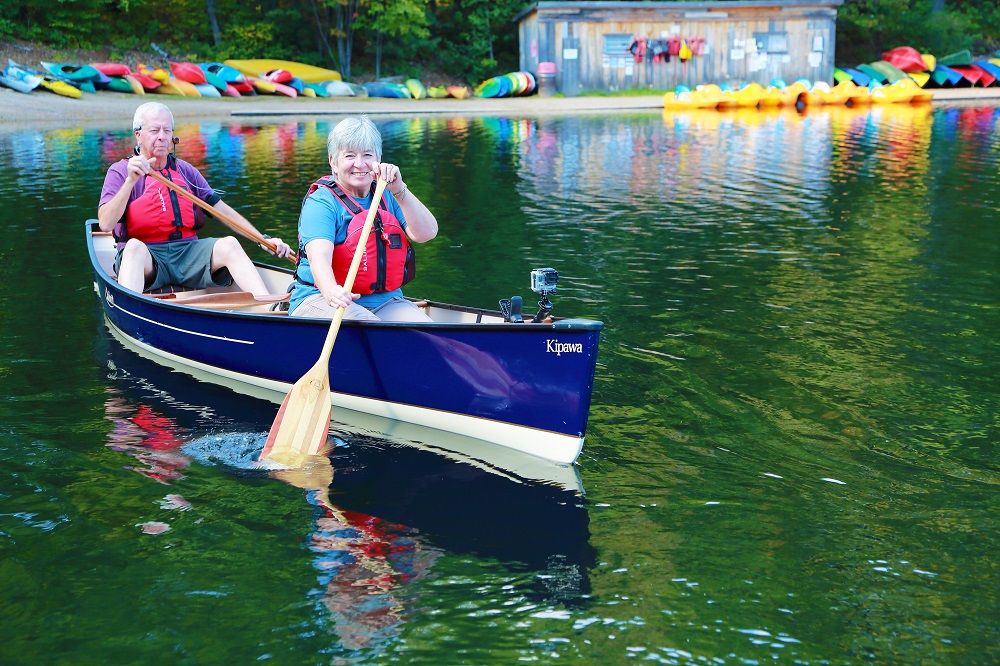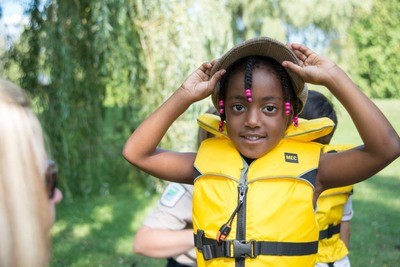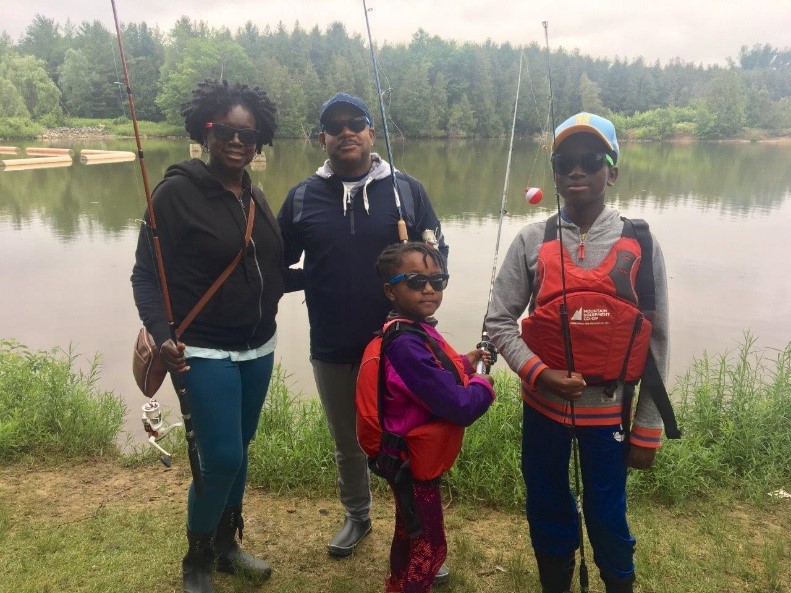Ontario Parks protects not only land, but also a network of over one million hectares of lakes and rivers across the province.
And we want you to be safe while you’re here enjoying them.
Here are some tips to make your next visit a water-safe one:
On the water: tips for boaters and paddlers
Before you even push off from shore, safety should be your first thought.
Even if you’re a confident swimmer, a personal flotation device (PFD) or lifejacket is a must. Sudden immersion in cold water can affect your ability to function, including your ability to swim. Wearing your PFD/lifejacket will not only keep you afloat, but also provide much needed warmth until help arrives.

There’s a reason safety gear is required onboard your watercraft. It can save your life or the life of a loved one.
Small vessels, like canoes and kayaks, are required by law to have mandatory safety equipment, such as:
- a personal flotation device (PFD) or life jacket per person (appropriately sized for the individual)*
- 15 m of buoyant heaving line (rope)*
- a sound signaling device (whistle)*
- a propelling device (i.e., extra paddle)
- a water bailing device
- a watertight flashlight (visual signal)
*also needed for stand-up paddleboards (SUPs), paddleboats, and watercycles

A first aid kit is also a useful item to have, just in case.
Although your PFD/lifejacket might make a nice cushion, it certainly won’t help you stay alive using it that way! So, suit up. Make sure everyone on board is wearing their PFD/lifejacket too (including your pup!).
Find more boater safety tips and the required safety equipment for each size of vessel.
And remember: never drink and drive, on land or water!
Renting a watercraft this summer?
Some Ontario Parks will offer watercraft rentals this summer.

Check the individual park webpages for information on what activities and facilities are available.
Borrow a PFD (personal flotation device)!
Borrow a PFD (free of charge) at participating parks.
Thinking about buying a PFD or lifejacket?
PFDs and lifejackets come in a variety of sizes and styles for both adults and children. It’s important that you find one that’s the right fit for you.

PFD/lifejacket sizing for kids is based on weight, while adults are based on chest size. Always read the label to confirm you’ve found the right size. If possible, try one on before purchasing.
 Children’s PFDs and lifejackets also come with a safety strap that goes between their legs and provides a handle behind their head. The handle ensures that you can quickly grab hold of them and pull them from the water if necessary, while the PFD/lifejacket remains in place. A dog’s PFD works in a similar way.
Children’s PFDs and lifejackets also come with a safety strap that goes between their legs and provides a handle behind their head. The handle ensures that you can quickly grab hold of them and pull them from the water if necessary, while the PFD/lifejacket remains in place. A dog’s PFD works in a similar way.
When putting on your PFD/lifejacket, ensure that all buckles and zippers are done up completely and the jacket fits snugly.
It’s simple: the PFD and lifejacket is designed to be worn. So wear it!
In the water: tips for swimmers
We want everyone to have a fun time in the water, and that starts with safety. If you’re not a strong swimmer, please either wear a PFD/lifejacket or stay out of the water.
Swim in designated areas
Parks often have designated swimming areas which are easily identified by a line of swimming buoys.

Inside of the buoys, closer to the shoreline is where visitors are encouraged to take a dip as these areas typically include gently sloped beaches and softer bottoms.
Swimming safety for kids
 Bring a PFD/lifejacket for smaller children and non-swimmers, and never leave them unattended next to or — especially — in the water, regardless of how shallow it may be. Keep a watchful eye on them at all times.
Bring a PFD/lifejacket for smaller children and non-swimmers, and never leave them unattended next to or — especially — in the water, regardless of how shallow it may be. Keep a watchful eye on them at all times.
The Canadian Red Cross notes that “the absence of adult supervision is a factor in most child drownings,” regardless of whether a child can swim or not.

Things like water wings and inflatable tubes are great, however they are not a substitute for a PFD/lifejacket and full-time adult supervision.
Other swimming tips:
- always swim with a buddy
- let someone know when and where you’re going for a swim
- test the waters with your feet, don’t dive right in
- don’t swim while under the influence of alcohol / drugs
On the shore: tips for campers and anglers
It can happen.
 You’re on a canoe trip with friends. You’ve arrived at your campsite, and you’re tasked with getting water from the lake for preparing dinner. You approach the shoreline and then… you slip.
You’re on a canoe trip with friends. You’ve arrived at your campsite, and you’re tasked with getting water from the lake for preparing dinner. You approach the shoreline and then… you slip.
Next thing you know, you’re in the lake. Even though you’re a good swimmer, you’re surprised and gasping for air. The cold lake water takes your breath away. Your paddling partners can’t see you from their spot next to the campfire and you can’t call out for help.
What saved you?
You still had on your PFD/lifejacket from the day’s paddle.
It may sound a bit extreme, but accidents like this can happen. That PFD/lifejacket popped you right back up to the surface, gave you time to adjust to the situation, catch your breath, and call for help.
Shoreline water safety is not only important for adults, it’s even more important for families with young children.

PFDs and lifejackets should be on kids any time they are close to the water’s edge, whether it’s to gather water, cast a fishing line, or even look for shoreline critters.
Whether you’re next to, on, or in the water this summer, always practice water safety so that you too can be a lifesaver!
Remember: the life you save may be your own or that of a loved one.
